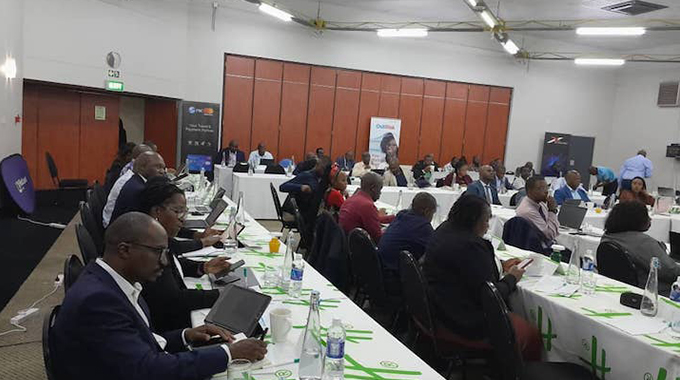100MW giant rising… 9 000 solar panels installed to generate first 5MW

Leonard Ncube, Victoria Falls Reporter
CONSTRUCTION of the giant Victoria Falls-Chidobe Solar Plant outside the resort city has started taking shape with contractors saying more than 9 000 solar panels have been installed and are ready to generate the first five megawatts (MW) of power starting next month.
Independent power producer, Power Ventures (Private) Limited, a subsidiary of Southern Energy, applied for a licence to establish a 100MW solar energy plant in BH114, about 3km from Lupinyu near Victoria Falls International Airport in Hwange District, Matabeleland North Province.
The project is being implemented in four phases of 25MW each and the construction of the first phase estimated at US$31 million is underway and expected to be completed before the end of the year.
The project is expected to take 100ha around BH114 and Mispah, and the first 20ha has been cleared and over 9 000 solar panels installed, which will give 5MW.
The project operators said the 5MW plant is 90 percent complete.
The massive project is envisaged to be one of the largest solar parks in Zimbabwe, adding to a list of capital projects underway in Matabeleland North.
It is expected to become a game-changer for the province’s energy sector and comes as
Zimbabwe targets to add more than 2 000MW to the national grid from solar, wind and other sources by 2030.
The project started about three years ago and the first phase was supposed to be completed in December last year but was stalled following the outbreak of Covid-19, coupled with challenges revolving around access to foreign currency to import equipment.
Yellow River, a Chinese company contracted by Sino Hydro to do civil works and construct the plant, has resumed work to clear more land on the site and install more panels.
A Chronicle news crew yesterday visited the site and noted that land clearing was underway to open more land on the targeted 100ha stretch south of the first 20ha where more than 9 000 solar panels have been installed.
About 20 locals have been employed as general hands to clear the land and do other work. Inverters and transformers have been installed and the contractors are waiting for more equipment that includes the main transformer, which is already in Harare after it was delivered from China.

Power Ventures project manager Mr Sam Mabvira said the main transformer is expected anytime from now to pave way for the final connection.
“The first 5MW is almost complete and should connect to the grid in the next three months. We are 90 percent complete for the initial 5MW and forex permitting, we plan to complete the 25MW in the fourth quarter of this year,” he said.
Mr Mabvira said access to foreign currency was the biggest challenge they were facing.
Power Ventures management is on record saying it is pushing to cover lost time.
Matabeleland North Provincial Affairs and Devolution Minister Richard Moyo said independent power producers will help mitigate the country’s energy challenges.
“We all know that the country has challenges with electricity so these solar projects will help mitigate the problem. A plant producing 100 MW is a big project and once complete, it will make a big difference,” he said.
Minister Moyo said when the Zimbabwe Power Company’s Hwange Unit 7 and 8 Expansion project is complete, it means additional 700MW to the national grid.

Zimbabwe Power Company (ZPC)
The solar project is expected to play a key role as nearby boreholes will be connected with solar pumps while shops and communities will also have access to electricity.
Matabeleland North is endowed with vast natural resources including coal, gold and solar capacity among others whose extraction will catapult the province’s development.
Clean energy is one of the priority areas for the National Development Strategy (NDS1), the others being food security, environmental protection, climate resilience and natural resources management, all targeted towards Vision 2030, which is aimed at transforming the country into an upper middle-income economy.
Zimbabwe is promoting development of solar power as it works to meet its target of reducing energy-related emissions by about a third by the end of 2030. – @ncubeleon












Comments